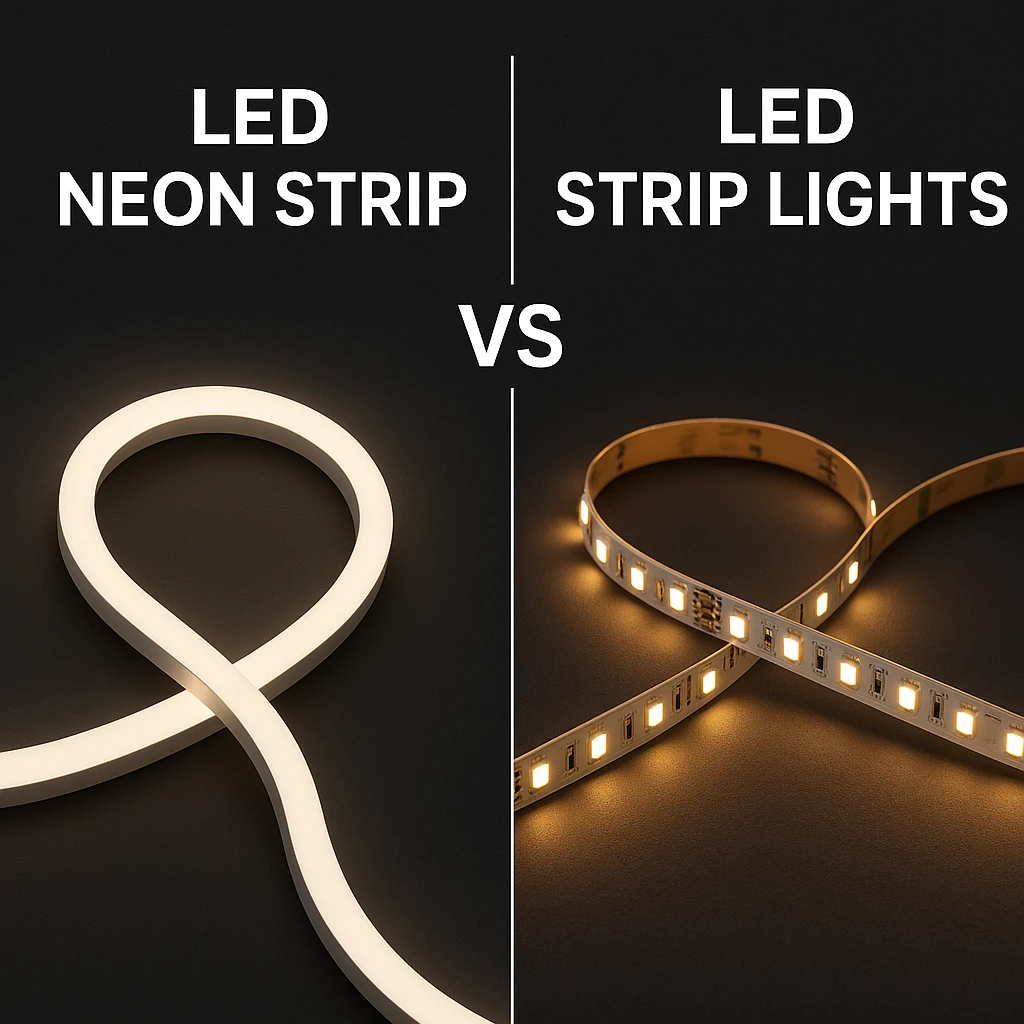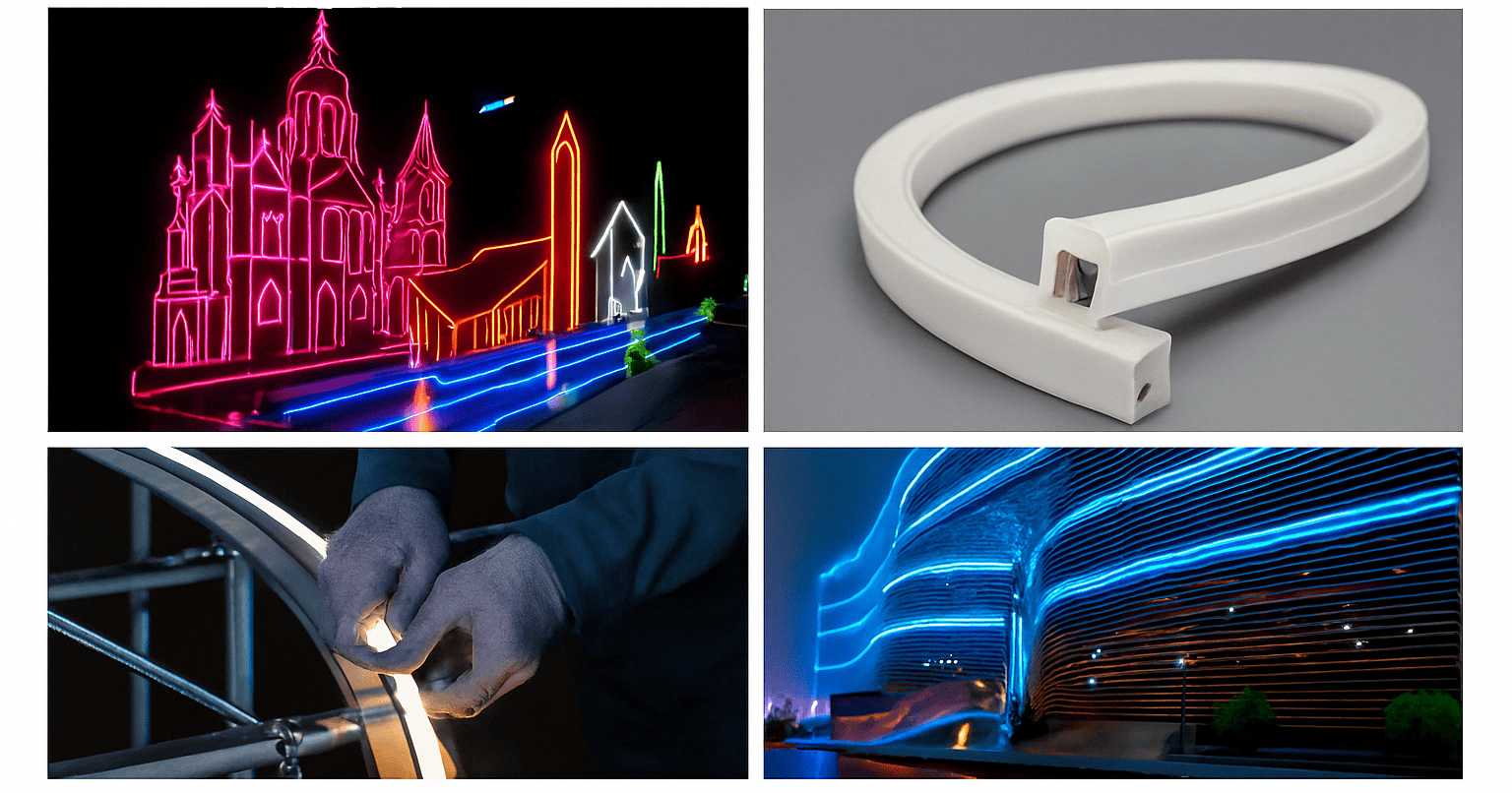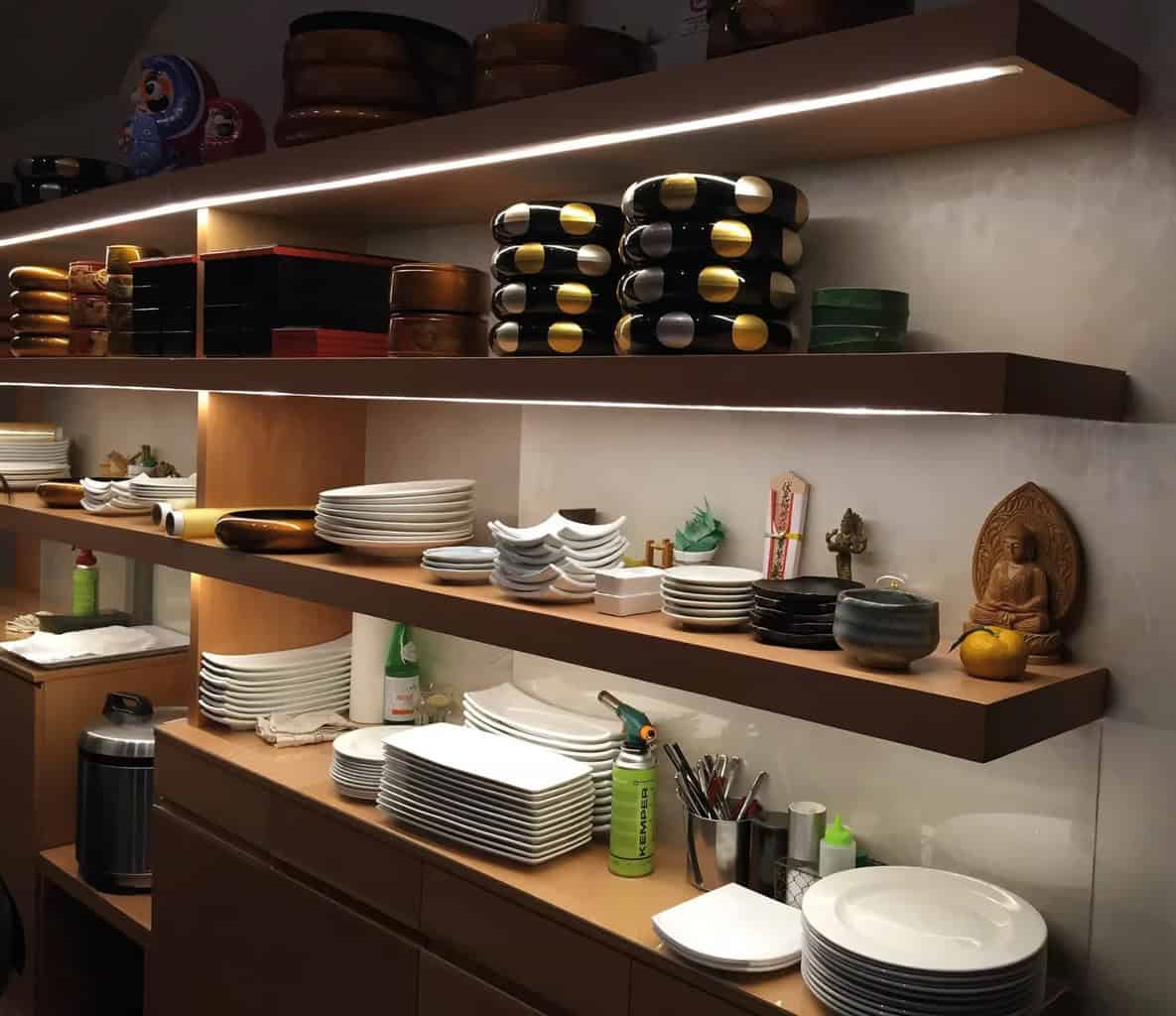In a world rapidly shifting to smart, energy-efficient lighting, LED controllers have become a key component of lighting systems. With the led controller, we can control various LED strip lighting parameters such as brightness, color, and color temperature. Automation can also be set up to optimize energy efficiency, visual comfort, convenience, safety, and more. There are many benefits to controlling led lighting, so the question for facility management is not “Do you need an LED controller?””but “What kind of LED controller should you choose? . Today, we’re going to talk about that.
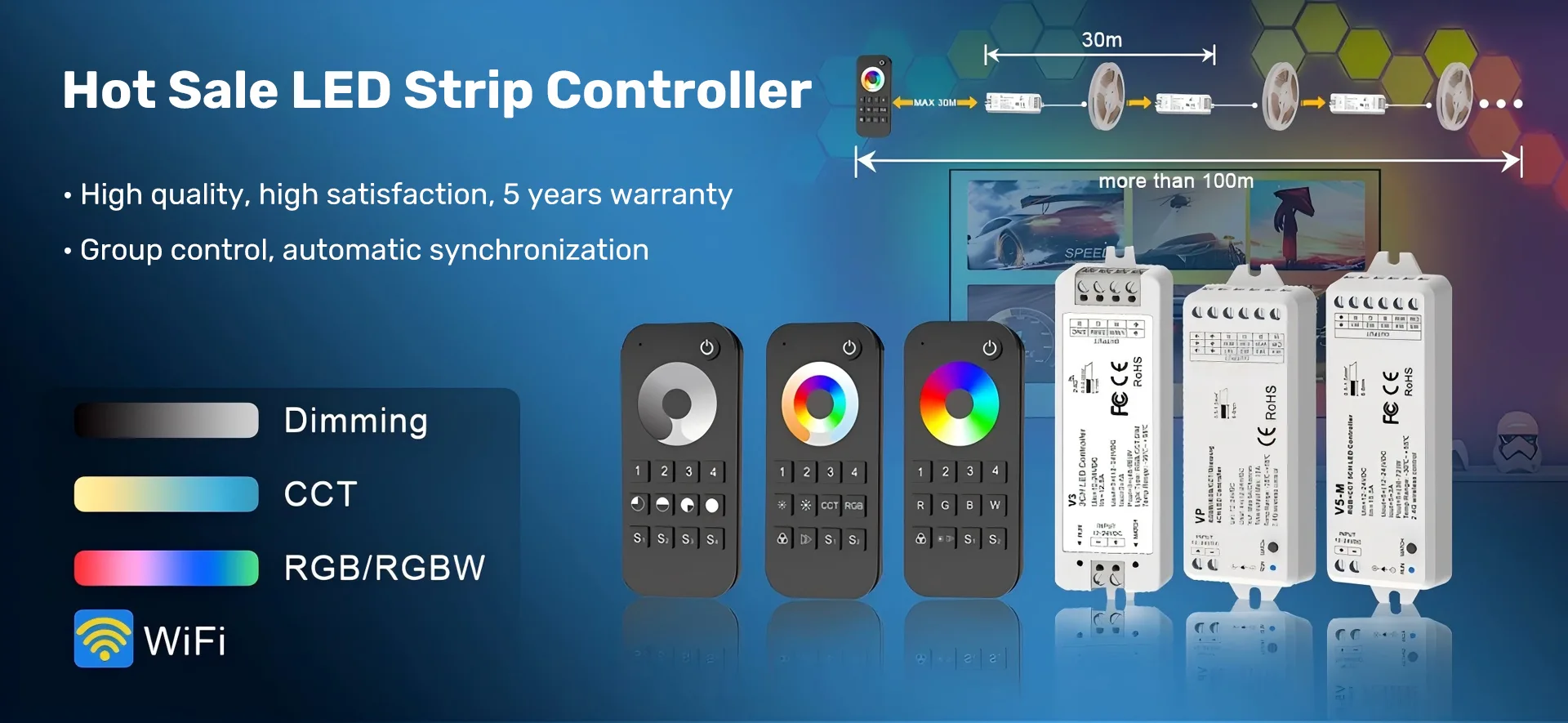
What is an LED controller?
LED Controller is an electronic device specifically used to control and drive led lights. It provides precise current and voltage control to control the brightness, color and effect of led lights. led controllers are widely used in the fields of lighting, display, decoration and art, providing important support for the development and application of led technology.
The led controller can provide various control methods and functions according to the needs of users and application scenarios. It can control the brightness of the led by adjusting the current or voltage to achieve the dimming effect. At the same time, the led controller can also provide a variety of color modes and dynamic effects, so that led lamps have colorful changes. By using the led controller, users can easily achieve precise control and personalized settings of led lights.
Types of LED controllers
The LED light controller is usually composed of a control chip, a power management circuit, and a communication interface. The control chip is responsible for receiving the user’s input signal, providing a stable power supply to the LED lamp through the power management circuit, and realizing the control of the brightness, color, and mode of the LED strip. According to different applications and costs of products, end users can choose their own controller to achieve a better application scenario. Led controllers are mainly divided into wired and wireless categories:
Wired LED Controller
DALI LED controller
DALI stands for Digital Addressable Lighting Interface. It is a 2-way communications protocol that is used to provide control over and communication between the components in a lighting system. DALI dimming system adopts digital dimming technology, which can achieve accurate, stable, and smooth dimming effect. Strong anti-interference ability; although the cost is high, its precise dimming effect and flexible control mode make it more advantageous in high-end applications.
KNX LED controller
KNX system is a global residential and building control standard which is a communication protocol for intelligent building and home automation systems to connect and control various devices and systems such as lighting, heating,Suitable for smart home and building automation systems, communication and control through bus systems.
DMX LED controller
DMX512 is a digital communication protocol used to control lighting and effects equipment in entertainment and construction applications. It allows precise control of up to 512 channels per universe, allowing for manipulation of the intensity, color, and motion of lighting fixtures.DMX512 is used to control parameters such as color and brightness of RGB LED strip. By controlling the address of each lamp, the color and brightness of each lamp bead are changed respectively to achieve a variety of changing lighting effects. The controller can be controlled through a mobile phone or computer directly connected to a PC or APP.
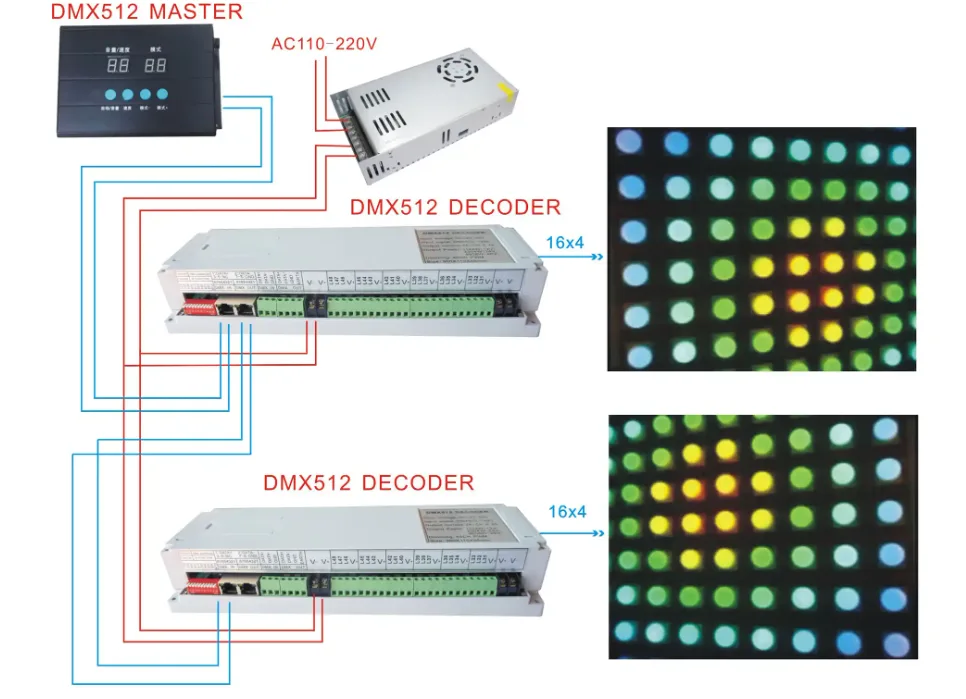
Triac dimmer controller
Triac dimming is a device used to adjust the brightness of the light, by controlling the triac conduction Angle to change the size of the current, so as to achieve the dimming effect of the light.Triac dimming effect is not accurate enough, but the wiring is simple and the cost is low.
0-10V dimmer controller
The working principle of the 0-10V dimmer is to control the brightness of the lamp by simulating the voltage signal. Specifically, the voltage signal output by the dimmer varies between 0 and 10V, thereby controlling the size of the supply current, which in turn adjusts the brightness of the light. When the voltage is 0V, the current drops to 0 and the light is off. When the voltage is 10V, the current reaches the maximum and the light reaches the brightest。The advantages of 0-10V dimming are accurate dimming, strong compatibility, and simple maintenance.The disadvantage is that two signal lines (0V and 10V) need to be configured, increasing the complexity and cost of installation, Not suitable for long distance transmission.
Wireless LED Controller
IR LED controller
The advantages of infrared remote control are cheap and economical, simple to operate, do not interfere with the work of other electrical equipment, and will not affect the surrounding environment. The disadvantage is that it is directional, the remote control and the reception need to be on the horizontal line, and the operating distance is generally 3-8 meters.
Bluetooth LED controller
LED Bluetooth remote control through Bluetooth technology and device connection, wireless control, users can anytime and anywhere through mobile phones or other smart devices to control the light, no physical contact switch with the general compared to the infrared remote control, Bluetooth smart remote control is more controllable, basically can do 360 degrees without dead Angle remote control. And they travel longer distances.The disadvantage is that the user device needs to have Bluetooth capability.
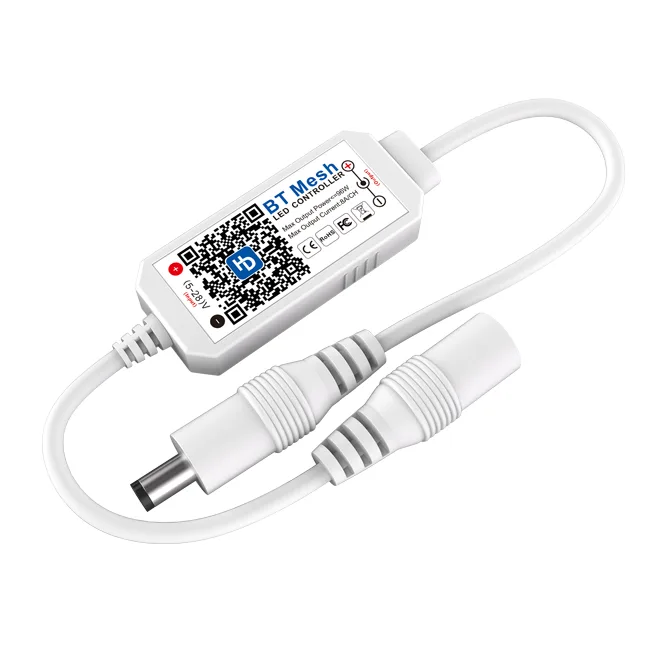
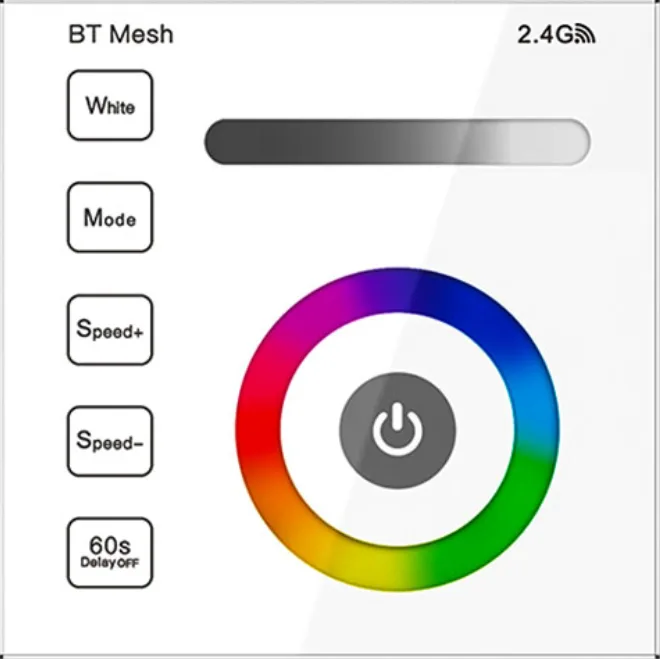
RF Wireless LED Controller
RF remote control uses radio frequency technology to transmit radio signals to achieve remote control. RF controller has the characteristics of simple operation, low power consumption and high safety. No directional, remote control is more convenient.
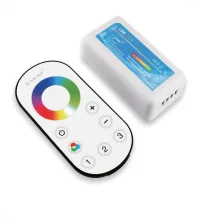
WiFi LED controller
WiFi does not need wiring, can not be limited to the limitations of the cable, in many scenarios more convenient. The transmission speed of WiFi is very fast, which can meet the needs of many high-bandwidth applications; The disadvantage is that WiFi coverage is usually more limited, and the signal may be weaker if the distance is longer. The stability of a WiFi network can be affected by a variety of factors, such as signal interference, equipment failure, etc
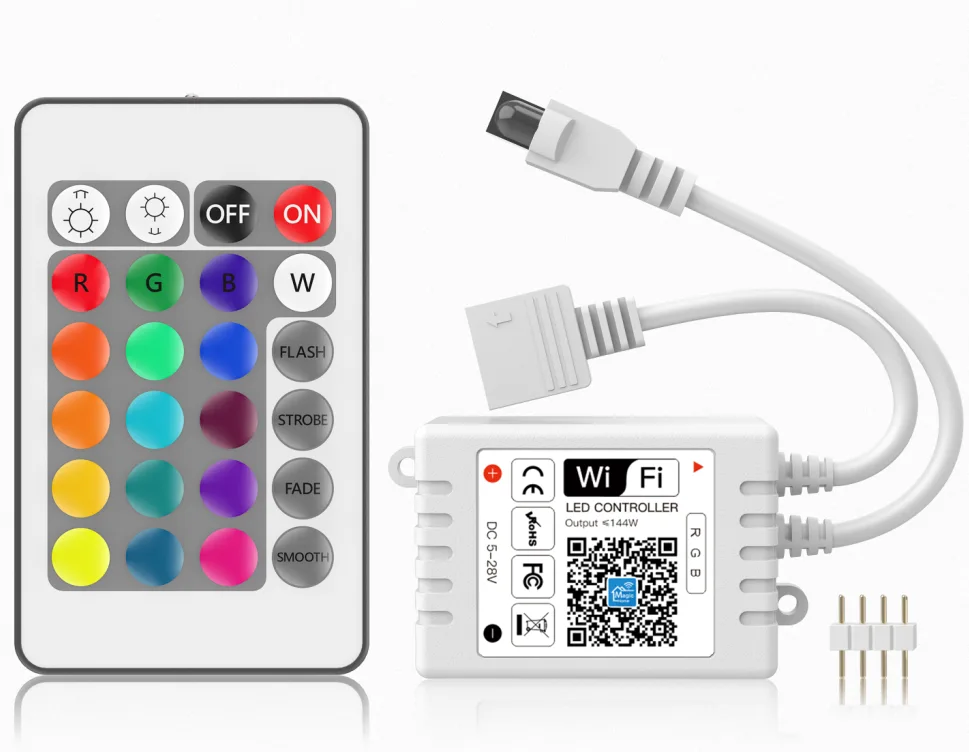
Zigbee LED controller
ZigBee is an internationally accepted two-way wireless communication technology, its each network port can theoretically access more than 65,000 ports, mainly used for short-distance, low power consumption and transmission rate is not high between various electronic devices for data transmission, low rate, low power consumption, low cost, suitable for large-scale projects,Zigbee is typically used for outdoor lighting products, while wifi focuses on indoor smart lighting control.
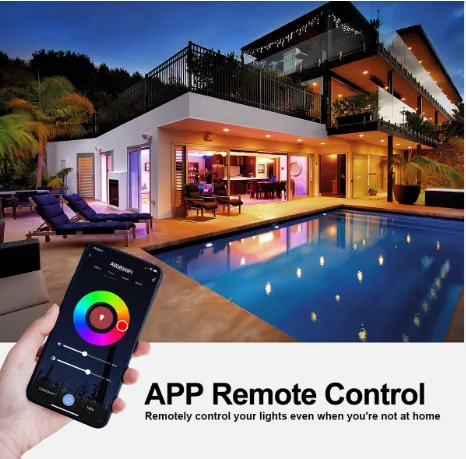
What is the difference between Wired LED controllers and wireless LED controllers?
I. Wired LED controllers
Wired and wireless LED controllers are useful for controlling LED lighting systems. Wired LED controllers are hard-wired systems that require a physical connection between the controller and the LEDs.
With wired LED controllers, the user can control the light’s intensity, color, and other features from a designated controller. Wired systems are reliable and easy to use but can be expensive and difficult to install.
Advantages:
– Stable signal transmission: The signal transmission of the wired controller is not affected by the external environment and can provide a stable signal.
– No battery required: Wired controllers do not require batteries, so there is no problem with battery life.
– Strong anti-interference ability: the signal transmission of the wired controller is not affected by electromagnetic interference.
Cons:
– High installation and maintenance costs: Wired controllers require specialized wiring work and require regular maintenance and inspections.
– Limited operating range: Because wired controllers require fixed wiring, their operating range is often limited.
II.Wireless LED controllers
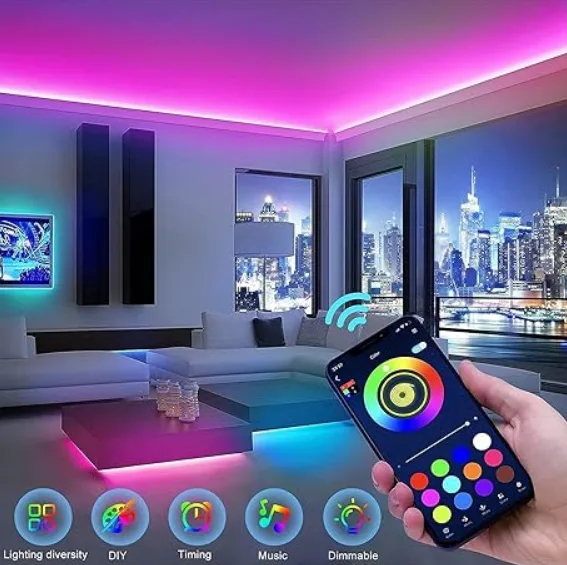
The wireless controller transmits signals through radio signals, and the operator can operate at a certain distance.
Advantages:
– Expand the operating range: The wireless controller can operate within a certain range and is not limited by wiring.
– Simplifies the installation process: The installation of the wireless controller is much simpler than that of the wired remote control, and only needs to align or match the transmitter and receiver.
– Easy to move: Because the operator of the wireless controller can operate from a long distance, the control is relatively flexible, and the main place where the network can be controlled.
Cons:
– Possible interference: The signal of the wireless controller may be interfered with by other wireless devices, resulting in unstable signals.
– Battery required: Wireless remote control requires battery power, so there are battery life issues.
– May affect signal quality: As the distance increases, the wireless signal may decay, which affects the quality of the signal.
In general, the choice of wired or wireless remote control depends on the specific application needs. For applications that require accurate, stable signal transmission, a wired remote may be a better choice. For applications that require extended operating range or ease of movement, wireless remote controls may be more suitable.Wired controllers usually require wiring and are suitable for fixed installation places, such as commercial lighting, stage lighting, etc. Wireless controllers are suitable for scenarios that require flexible cabling, such as smart homes and mobile devices. Wireless controllers are typically designed for low power consumption and are suitable for long periods of operation without the need for frequent battery replacement.
Key Factors to Consider When Choosing an LED Controller
1. Voltage Compatibility
To choose the appropriate controller according to the working voltage of the lamp belt, the output voltage of the controller and the voltage of the lamp belt need to be consistent. In addition, it should be noted that the input voltage of the controller should also meet the requirements of the local voltage.
2. Wattage Capacity
When choosing the right power supply, you’ll need to know these four things:
-The power consumption of your strip measured in watts per foot
-The length of LED strip lighting your project requires
-The voltage of your strip
-If you want your power supply to be dimmable
We use this general rule of thumb:Make sure your power supply’s rated wattage is at least 20 percent higher than the total wattage of your LED strip light.If you run your power supply beyond its capacity, this will cause the led strip to overheat or damage.
3. Control Methods
There are many kinds of control methods for the lamp belt, and different control methods can be selected according to the needs. Commonly used control methods are: switch control, brightness control, color control, intelligent control, DMX512 control and so on.Taking into account the different applications and costs of the product, the end user can choose the right controller to meet their requirements.
4. Compatibility with LED Strip Type
Pay attention to the purchase of the controller to match the LED light belt type to ensure that the controller can work normally.
5. Costs and Applications
Choose a well-known brand of LED light controller, although the price will be expensive, but the quality is guaranteed, after-sales service is more reliable; In general, the choice of wired or wireless remote control depends on the specific application needs. For example, just ordinary RGB dimming color, with a general wireless controller is enough. If you need more refined dimming and color control, just choose the expensive DMX512 wired controller.
Conclusion
LED controller is a kind of electronic equipment specially used to control and drive led lights, with precise control, a variety of control methods, a variety of color and mode selection, energy saving and environmental protection. It plays an important role in the fields of lighting, display, decoration and art, and provides important support for the application and development of led technology. led controller through lighting control, color control, dynamic effect control and system integration and control and other functions, give led light more expressive and creative. With the right controller, more colorful lighting effects can be achieved, adding luster to home decoration and commercial places. Choose your own needs of the led strip controller, can bring more fun and convenience to life. If you need a specific production, you can contact SIGNLITELED. We have more than ten years of led lighting manufacturing experience, can give you reasonable solutions and suggestions.
